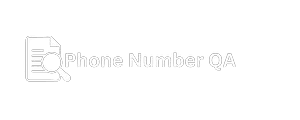Business phone numbers are essential for establishing professional communication channels and connecting with customers. However, understanding the structure and components of a business phone number can be beneficial when setting up phone systems or managing communication infrastructure. This article explores the various elements that make up a business phone number, What Does a Business Number Look Like shedding light on their significance and providing clarity on what a typical business phone number looks like.
Country Code:
Every business phone number begins with a country code, which indicates the country where the number is registered. Country codes vary across different regions worldwide Bahamas Phone Number List such as +1 for the United States, +44 for the United Kingdom, or +61 for Australia. The country code helps ensure calls are rout correctly when dialing internationally and distinguish the origin of the phone number.
Area Code:
Following the country code, a business phone number typically includes an area code. The area code serves as a geographic identifier, indicating the specific region or city associated with the number. For instance, in the United States, area codes can represent different states or metropolitan areas, such as 212 for New York City or 310 for Los Angeles. Dialing the area code along with the phone number allows for accurate routing within a specific geographical area.
Main Phone Number:
The main phone number represents the core numerical sequence that uniquely identifies a business. It follows the country code and area code, providing a specific combination Phone Number QA of digits associated with the organization. The main phone number, sometimes referred to as the local number, is typically assign by a telecommunications service provider and serves as a distinct identifier for the business entity.
Extension Numbers:
In larger organizations or companies with complex phone systems, extension numbers are often used to reach specific departments or individuals within the business. An extension number is an additional set of digits that follows the main phone number, usually separate by a specific character (e.g., “x” or “#”). Extension numbers allow for internal call routing, helping callers connect with the desired person or department without going through a receptionist or operator.
Formatting and Presentation:
Business phone numbers can be present in different formats depending on regional conventions and personal preferences. Common formats include hyphen-separated digits (e.g., +1-555-123-4567), parentheses for area codes (e.g., +1 (555) 123-4567), or simply. A continuous string of numbers (e.g., +15551234567). Formatting variations are mainly aesthetic and do not affect the functionality or routing of the phone number.
Conclusion:
Understanding the structure and components of a business phone number is essential for effective communication and establishing professional connections. From the country code to the area code, followed by the main phone number and potentially extension numbers. Each element plays a significant role in uniquely identifying a business and routing calls accurately. By comprehending the anatomy of a business phone number. Individuals and organizations can effectively manage their communication systems and ensure seamless connectivity with customers, clients, and colleagues.








